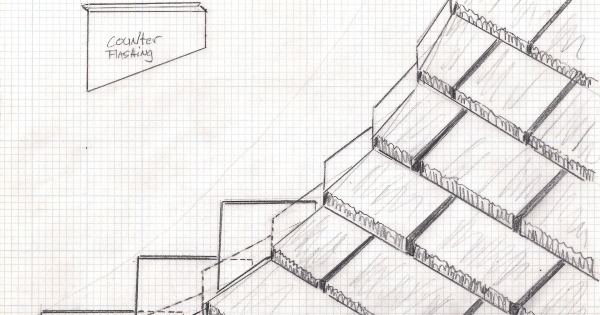Q & A - Replacing Step Flashings

Understanding what 'secure step flashing' means in a contract and which material to use.
Question
Cindy asks, "I live in a townhome in Maryland and I have received five quotes for a new roof...I was all set to go with one company until I looked over the contract one more time. The contract indicated new flashing everywhere, but it said, 'secure step flashing.' I emailed him and asked if that would be new flashing and this was his response:
'Step flashing goes up underneath the siding and down under each shingle. Since you have a townhouse, your step flashing would be impossible to remove and replace unless you were to remove your neighbor's siding, detach the flashing, install new flashing, then install new siding or the existing siding. This is your neighbor's siding and I can’t get it off without damaging it. We just verify that it is in place and secure it with additional fasteners if needed. It is aluminum, so it won’t rust or corrode and will last the lifetime of your new roof.'
I went back and asked two other roofers who quoted me a roof and I heard from one. He says he would be installing new step flashing, it would not damage the siding, that they don’t normally have to remove it and they do it all the time. I looked online and aluminum, although used frequently because it is cost-effective, can rust and corrode. I don’t know if it will last another 20-25. I just want a quality job for a reasonable price, not looking for the cheapest quote."
Answer
Cindy, most step flashings used are galvanized steel because they lay nice and flat and resist rust. Aluminum is a softer metal and subject to tearing and bending during roof removal but being a nonferrous metal will also last a long time. The first contractor is correct in stating the siding is a party-wall belonging to your neighbor. Some walls with siding have a Z-bar flashing that terminates the siding at the 3-4 inch area above the roof. The step flashing slides under this Z-bar and when the re-roof is done the step flashings are easily replaced. It sounds like this is not what you have.
As seen in the photo, there is a blocking behind the siding at the roof. The siding gets nailed to the studs and the lower blocking and does create a difficulty in step flashing replacement. Don't get me wrong, it can be done but can be a real pain to be done correctly depending on the type of siding. In this photo, we just replaced the small walls on each side. Be careful though, some roofers will install the new step flashing on the outside of a wall and then run a termination bar with caulking on top.
I do not recommend this but, if this was my roof, I would add the language in the contract "seal all nail holes in step shingles at walls prior to shingle installation." You don’t want water seeking out these old nail holes and accessing the roofing system and deck below. You should be ok reusing these existing step shingles as long as there is one step flashing per course and you will be better off doing it that way rather than damaging the siding and paper behind it trying to replace them. Ask about your contractor's warranty on his craftsmanship to cover any future problems.
Have a question? AskARoofer.
Find your local roofing contractor in the RoofersCoffeeShop® Contractor Directory.








Comments
Leave a Reply
Have an account? Login to leave a comment!
Sign In